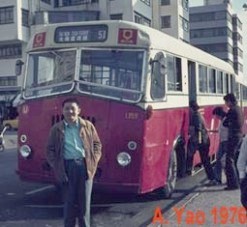 |
Kowloon Motor Bus Co.
An Albion Victor bus serving the TWISK,
pictured at Yuen Long Terminus.
This route has a very steep climb
uphill and downhill bewteen Tsuen Wan and Shek Kong averaged 8%.
Unlike CMB, the KMB "One Man Bus" decal was red and yellow
|

|
Kowloon Motor Bus Co.
Albion Victor Bus serving Clearwater Bay,
pictured at Tai Au Mun (literally "Large passage") Terminus, 3 km
from Clearwater Bay. The steepest climb of this route was between Ping Shek
(2 km east of Choi Hung) and the Good Hope Knoll on Clearwater Bay Road,
8% uphill for 6 km. The fleet were well maintained and overheating enroute was
very rare.
|
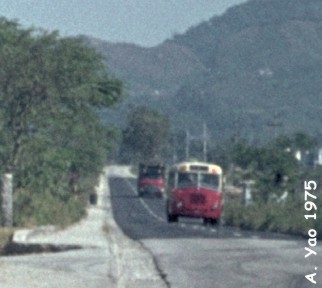
|
KMB Albion Victor Bus pictured at Kam Tin, downhill from TWISK.
|
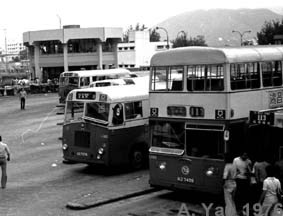 |
Choi Hung (literally "Rainbow")Terminus, formerly Ngau Chi Wan,
(literally "Dairy Bay")
an interchange of the Sai Kung Peninsula and urban bus services in the
1970's. An array of Albion Victor Buses serving Sai Kung, Clearwater Bay
and Rennie's Mill. The Sai Kung Penninsula bus services hub has since
moved 3 km west to the Diamond Hill Subway Station and replaced by
rear-engined, low floor double decker buses.
The Sai Kung Penninsula bus services represented 3 stages of technological progress.
The original Routes 21- Tai Au Mun, 22- Sai Kung and 30- Rennie's Mill all operated from the Kowloon City Ferry
when the interchanges were done by ferries and buses.
In 1967 the routes 21 and 22 were relocated to Choi Hung, effectively placing
the interchange 5 km shorter and freed up 2 buses per route for the same service.
In 1970 the Rennie's Mill service reemerged as route 90 from Choi Hung and the
first batch of Albion buses converted to "One Man Bus" operation. The manual gate
entrance was replaced by electric folding door.
In 1973 routes 21 and 22 were renamed routes 91 and 92 and operated as one
man bus service.
Routes 91 and 92 were relocated to the subway station. Route 90 Rennie's Mill
service was discontinued in 1996 due to new town planning of the area.
|
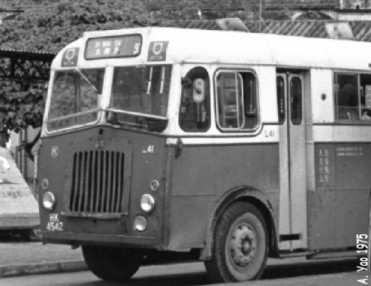
|
An earlier version of Albion Victor (Fleet no. L42) on Route 93 in the Sai Kung Terminus, a very challenging route,
in the 1970's the road width was about 15 feet. The captain was always on alert of oncoming
traffic. The electric folding door on this bus was originally fitted with a manual gate.
|
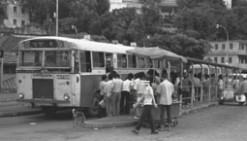 |
The Albion Viking entered the Sai Kung Peninsula service in the mid 1970's
when the road condition improved. The Viking's body was 5 ft longer, the chasis was 8 inches lower than its
predecessor and carried more passengers.
The successors to the Albion Viking in the Sai Kung Peninsula service were the
Leyland Victory II and Dennis Jubilant double deckers.
|
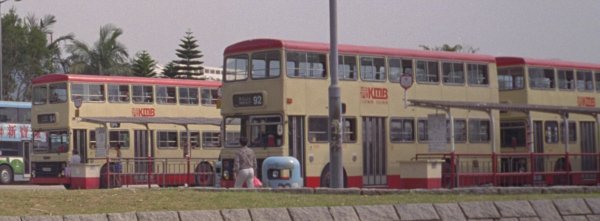 |
The Sai Kung Terminus in 1998. The fleet of Dennis Jubilant was at their last leg of the
Sai Kung Penninsula service
on routes 92 and 94.
|






